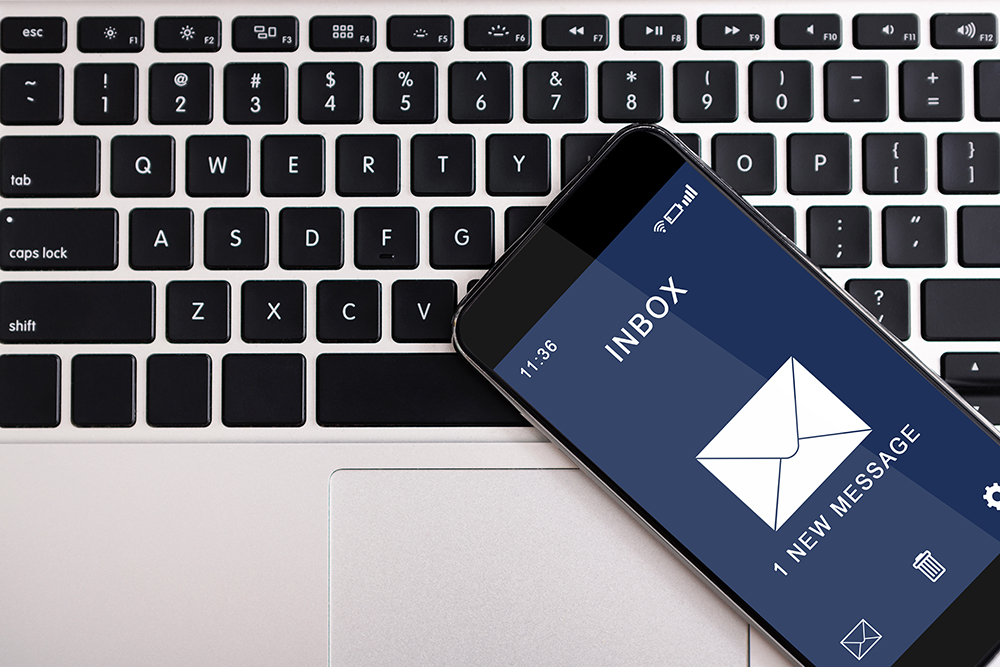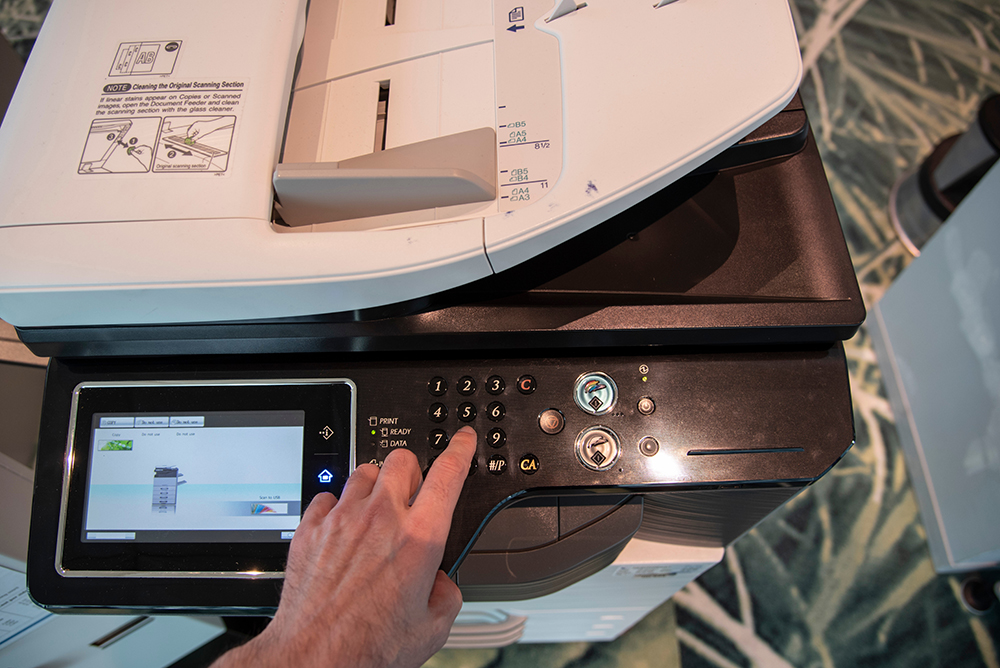With 2022 being just days away, it is time for you to start planning, strategizing, and enacting reasonable security measures to protect your business from cyberattacks and IT issues. We’re sharing our security checklist that will include the top IT-related New Year’s resolutions that will boost your cybersecurity for 2022. If you stick with it, they’ll also help you improve your cybersecurity for years to come.
Table of Contents
IT-Related New Year’s Resolutions
Below are the top 22 ways to ensure your business is safer than it was in 2021. If you are already doing them, great! But if you haven’t started yet, here are some tips on how to get started:
Evaluate Your Business’ Current Approach To Cyber Security
The first step to improving your cybersecurity is to evaluate where you stand now. This means assessing what you know about cybersecurity, who has access to your systems, and whether you have any gaps in your defenses. Before you dive in and start making changes, you’ll need to get together with your IT team to review what needs to be done.
The first step is evaluating your network security, cybersecurity practices, and security policy. This includes everything from updating software patches, installing antivirus on all your machines and mobile devices, ensuring that employees use strong passwords, and keeping their computers up to date. Once you’ve identified where there may be gaps in your current cybersecurity strategy, then you can begin working on solutions and setting realistic goals.
Implement A Multi-Layered Defense System
Your primary goal should be to create a multi-layered defensive system. By doing so, you’ll have more options when an attack does occur. For example, suppose someone manages to gain access to your network through a phishing email or social engineering. In that case, you won’t be entirely out of luck because you’ll still be able to block them at other points. You can use multiple layers of protection to stop ransomware, DDoS, and phishing attacks before they even reach your network. These layers include firewalls, intrusion detection systems (IDS), anti-virus, endpoint security, web application firewall (WAF), and next-generation firewalls (NGFW). Each has its purpose, but they work best as a cohesive whole.
Use Cloud Computing Services
Cloud computing is becoming increasingly popular among small businesses. It allows companies to store data online instead of keeping it onsite. You don’t have to worry about losing or damaging your data. Instead, you can simply back it up regularly. If you decide to move some of your data offsite, you’ll want to ensure it is encrypted. There are many different encryption methods available—more on that below.
Invest In Cybersecurity Training
At the very least, your employees should know what information they should keep private, where sensitive information should be stored, and how to handle confidential documents securely. They should also know how to avoid phishing scams and recognize suspicious emails. Security awareness training is one of the most effective ways to combat cybercrime. It helps employees understand what constitutes a threat and how to avoid becoming victims. This is especially important because many people don’t realize they’ve become cyberattack victims until months later.
If you haven’t already started this process, now is the perfect time to invest in cybersecurity training. Training can give you the knowledge and tools necessary to identify threats and prevent them from reaching your network. In addition to providing you with the skills needed to defend against cyberattacks, training can also teach you how to respond to an incident once it happens. This includes knowing how to report an issue properly and restoring your network quickly.
Create A Disaster Recovery Plan
Disaster recovery is another critical aspect of cybersecurity. Without proper measures, you could lose vital information and potentially put your entire organization at risk. A good disaster recovery plan will cover everything from backing up files to restoring servers. While it might seem daunting, implementing a solid plan will save you money and headaches.
Start Using Encryption
Encryption is one of the most important things you can do to keep your data safe. It has been proven repeatedly that hackers have difficulty accessing your data when you encrypt it. If you are looking to improve your cybersecurity in 2022, this would be a great place to start. You should use an encrypted file system like BitLocker or FileVault on all your devices because these systems encrypt everything on your computer, which means no one can access your files without your permission.
Enable Data Encryption Kits
Data encryption kits are small devices that encrypt files on your hard drive. These kits come in both hardware and software formats. Hardware kits add an encrypted chip to your motherboard, while software packages let you encrypt individual files or folders. Both types of kits provide similar levels of protection. To learn more about data encryption kits, read this article.

Encrypt Your Emails
Email is one of the most popular methods of communication today. Unfortunately, it’s also one of the easiest targets for hackers. If someone hacks your email account, they could gain access to all of your personal information. The best way to avoid this problem is to use two-factor authentication whenever possible. Two-factor authentication requires entering a second code when logging into an account. It adds another layer of security to your emails, making it harder for anyone to steal your login credentials.
Keep Your Passwords Strong
Passwords are often the weakest link in any cybersecurity plan. Make sure you create unique passwords for every website and service you use. Never reuse passwords across multiple sites. Avoid common password phrases like “password123,” “qwerty,” and “abc123.” Instead, choose something more challenging to guess, like a dictionary word or a random string of characters.
Upgrade Your Firewall
A firewall is a program that helps protect your network from outside attacks. Many organizations still rely on outdated firewalls, but better options exist. For example, Windows 10 comes with built-in protection called Defender Application Guard. This feature allows you to run apps within isolated containers so they cannot access other programs or websites.
Automate Your Data Backups
You must back up your data regularly to ensure that your business doesn’t suffer a cyberattack. There are many ways to automate backups, including cloud storage solutions, virtual machines, and external drives. Once you set up a backup schedule, you won’t have to worry about losing valuable data.
Install Security Software
There are plenty of free antivirus and antimalware tools available online, but we use SentinelOne, which is not free but incredible. These programs scan your computer for malware and viruses, then remove them automatically. However, some prefer paid versions of these products because they offer additional features. Look for software that offers 24/7 customer support, real-time scanning, and automatic updates.

Protect Copiers And Printers
As we’ve seen, copiers and printers are some of the most common targets of hackers. If you don’t secure them, you could expose yourself to costly fines and legal action. A printer management system is the best way to keep your office safe. This software monitors your devices and alerts you if any problems arise. It also allows you to remotely manage each device to easily update firmware, change settings, and perform maintenance tasks.
Since copiers and printers are vulnerable to hacking, you need to make sure that you take steps to prevent unauthorized access. One easy solution is to disable USB ports on your copier or printer. Another option is to allow authorized users to connect to the device using Wi-Fi and nobody else. You can also limit printing jobs to specific times each day.
Update Your Software
Updating your operating system and applications is another crucial step in improving cybersecurity. While it may seem like a hassle, updating your software is essential to keeping your device secure. The best way to update your software is by following Microsoft’s instructions. They provide detailed information about what updates need to be installed and how to check for available updates and install them.
Keep Your Systems Updated
The best way to prevent viruses and malware from infecting your computer is to stay current with software updates. Most companies provide automatic updates for their operating systems. If your company uses Microsoft Windows, you should download the latest patch as soon as it becomes available.
Use Two-Factor Authentication (2FA)
2FA is a method where users must input a code sent via text message or phone call before logging into their accounts. This adds an extra layer of security to your account, preventing anyone from logging in if they don’t know the correct combination. 2FA is especially useful for high-risk accounts such as those used by employees who handle sensitive documents.
Update Your Company’s Technology While Taking Inventory
This means you should regularly review your computer systems, software, and network infrastructure to ensure everything is running smoothly. It’s important to know what works and what doesn’t so you can fix any problems before they become major headaches. Technology updates keep your business running smoothly. Now is the time to update old machines. Afterward, conduct a thorough post-update review to ensure everything is working correctly. Note that some updates require downtime. Before updating your system, schedule a maintenance window to minimize disruptions.

Break Bad Security Habits
It’s essential to practice good cybersecurity habits as well. Hackers often target individuals who aren’t careful enough with their passwords. Make sure you change your password frequently and never reuse the same password across multiple accounts. Also, be wary of clicking links in unsolicited messages and downloading suspicious attachments. And if a security incident occurs, report it immediately. Time is of the essence, and the quicker you notify your IT department, the better the chance of recovering lost data.
Learn From Your Cyber Security Mistakes
If you’ve been hacked before, don’t hesitate to share your experience with other employees. Review your company’s incident response plan and see where improvements could be made. If you don’t know what happened, you won’t know where to focus your efforts. This will help you understand the importance of keeping your computers secure and ensuring it doesn’t happen again. Don’t forget to document any changes you make to your network infrastructure. Doing so will protect you against future attacks.
Invest In Cloudbased Antispam Software
Antispam software helps block spam messages from reaching your inbox. A Cloud-based solution like SpamAssassin is designed to run on servers instead of your desktop. It’s ideal for large organizations because it scales up and down automatically depending on traffic.

Never Respond To Unsolicited Calls Or Texts
Hackers may send phishing emails or text messages to trick you into giving away your username and password. When you receive these kinds of messages, always ignore them. Instead, call the number back or reply via text message. This will ensure that you’re only responding to legitimate requests. You can also report the scammer to the Federal Trade Commission (FTC).
Keep Up With Industry Trends
Cybersecurity experts suggest staying abreast of emerging threats. For example, hackers have begun targeting IoT devices, which are connected devices that use internet connectivity. These devices include thermostats, light switches, door locks, and more. It’s essential to stay informed about the latest threats and take steps to avoid becoming a victim.
Wrapping Up
And there you have it! Our list of the top IT-related New Year’s resolutions that small to medium-sized businesses should be making this year. Hopefully, by following these tips, you’ll be able to improve your cybersecurity posture and prevent an attack before it happens. Contact us today if you’d like to learn more about New Year’s resolutions for work that we recommend or how to keep your organization safe.
We look forward to helping you get started. In the meantime, have a safe, secure, healthy New Year and beyond!



Recent Comments